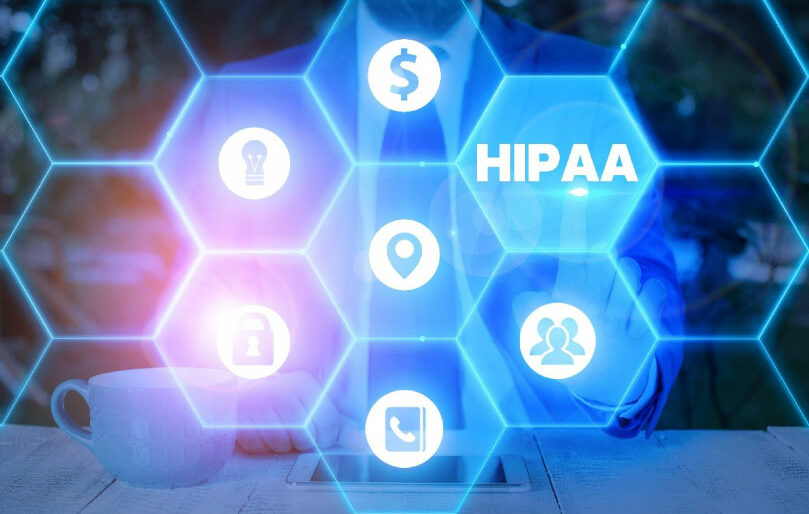
HIPAA Compliance in Medical Billing
With the evolution of the Healthcare Industry, the convergence of medical billing and HIPAA compliance has become more important. As new technologies and practices emerge, safeguarding patient information becomes increasingly challenging. In this blog, we’ll discuss the critical intersection of HIPAA compliance and medical billing, exploring the key aspects to ensure the protection of Protected Health Information (PHI).
The Office for Civil Rights (OCR) levied substantial fines on healthcare entities for HIPAA non-compliance in the fiscal year 2022. The total fines imposed amounted to $48 million, emphasizing the serious consequences of inadequate data protection measures. (Office for Civil Rights Annual Report)
Medical Billing: The Crucial Link
Medical billing serves as the financial backbone of healthcare providers. From claims processing to reimbursement, the billing process involves the handling of significant volumes of PHI. Ensuring the seamless integration of billing practices with HIPAA compliance is pivotal to maintaining the trust and confidentiality of patient information.
HIPAA, the Health Insurance Portability and Accountability Act, establishes the standard for protecting sensitive patient data. In the realm of medical billing, adherence to HIPAA regulations is not just a legal requirement but a fundamental commitment to patient privacy and data security.
Key Components of HIPAA-Compliant Medical Billing
1. Patient Consent and Authorization
Ensuring HIPAA compliance begins with obtaining explicit consent and authorization from patients for the use and disclosure of their PHI in the medical billing process. Transparency is key; patients should be informed about how their information will be used for billing purposes. This step not only satisfies legal requirements but also establishes a foundation of trust between healthcare providers and their patients.
Healthcare organizations must develop clear and comprehensive consent forms that outline the specific ways in which patient information will be utilized during the billing process. Educating patients about their rights regarding the protection of their PHI fosters a culture of openness and patient empowerment.
2. Secure Electronic Transactions
In an era dominated by digital transactions, securing Electronic Protected Health Information (ePHI) during electronic medical billing processes is paramount. HIPAA mandates the use of secure technology and encryption protocols to safeguard patient data from unauthorized access.
Healthcare providers must invest in advanced billing software that adheres to HIPAA standards, ensuring end-to-end encryption of patient information during electronic transactions. Regular software updates and patches are essential to address emerging security threats and vulnerabilities, providing an additional layer of protection against potential breaches.
3. Staff Training and Awareness
Human error remains a significant factor in data breaches, emphasizing the importance of comprehensive staff training and awareness programs. All personnel involved in the medical billing process should undergo regular training sessions to stay informed about HIPAA regulations, data privacy best practices, and the evolving landscape of healthcare compliance.
Training programs should not be limited to the billing department alone; every staff member who may come into contact with PHI should be educated on the significance of patient privacy. This includes front-desk staff, nurses, and any personnel with access to patient information. Continuous education and periodic refresher courses help reinforce a culture of compliance throughout the organization.
4. Regular Audits and Monitoring
Regular audits and monitoring of the medical billing process are essential components of a proactive HIPAA compliance strategy. Internal and external audits help identify vulnerabilities and areas for improvement, allowing healthcare providers to address issues before they escalate.
Internal audits involve a systematic review of billing practices within the organization. This self-assessment helps identify any deviations from HIPAA standards and allows for corrective actions. External audits, conducted by independent entities, provide an objective evaluation of compliance levels and offer insights into industry best practices.
Monitoring should be an ongoing process, utilizing advanced technologies to track and analyze access to patient information. Automated alerts can notify administrators of any suspicious activities, enabling a swift response to potential security threats.
Conclusion
In conclusion, achieving HIPAA compliance in medical billing is not only a legal obligation but a fundamental commitment to patient welfare. By integrating robust processes, staff education, and advanced technologies, healthcare providers can navigate the complex terrain of medical billing while safeguarding the integrity and confidentiality of patient information.
As the healthcare landscape continues to evolve, staying abreast of regulatory changes and proactively adapting billing practices will be pivotal. The synergy between medical billing and HIPAA compliance is not just a necessity; it's a testament to the healthcare industry's dedication to providing secure and patient-centric services.
AltuMED is a Medical Billing Services and Solutions Company ready to help you against the complexities of HIPAA compliance and create a secure environment for the management of patient information. Schedule a call now!
Subscribe to Our Newsletter!
Subscribe to Our Newsletter!
Enter Your Email Address. We Promise We Won't Spam You
